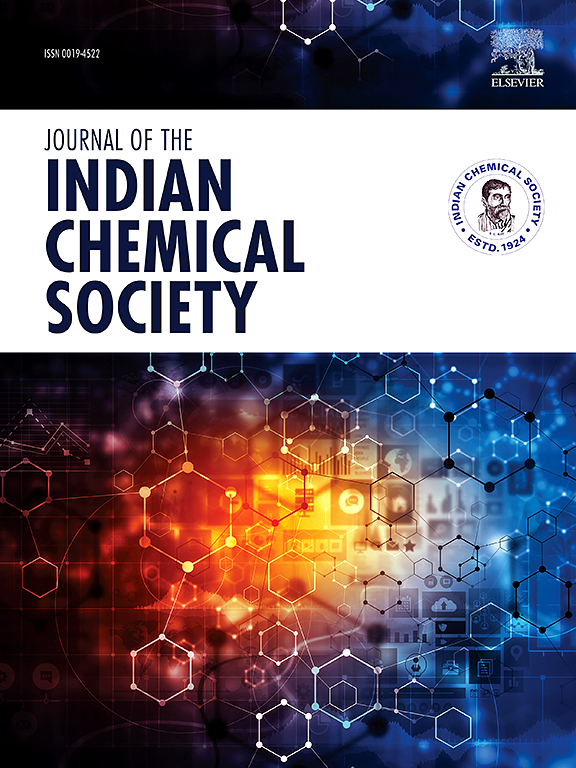Identification of high-affinity molecules from Sesbania grandiflora as potential therapeutic agents for oral ulcers- A multi-target-directed in silico approach
IF 3.2
4区 化学
Q2 CHEMISTRY, MULTIDISCIPLINARY
引用次数: 0
Abstract
Oral ulcer, a multi-factorial ailment affecting the oral mucosa, characterized by epithelial necrosis, is the most prevalent condition among oral mucosal diseases globally. Given the polygenic etiology, the existing treatment methods primarily focus on symptomatic relief, and adverse clinical conditions are reported on long-term usage. Given the distinct benefits of natural products against multiple disease targets, the present study aimed to analyze the potential of phytochemicals of Sesbania grandiflora against oral ulcer targets, considering its traditional usage and scientific evidence for wound healing. Computer-based predictive analysis showed that, out of 74 screened compounds, 17 compounds bind to multiple targets of oral ulcer with high affinity. Among these, the compounds Sonchuionoside A, and 2-Acetylflexuosin A, mediated favorable interaction with selected targets by satisfying the pharmacological parameters. Based on the docking results, the target ITGA4 was selected further to estimate the binding stability of these compounds using molecular dynamics and binding free energy calculations, where the obtained outputs were in good agreement with the docking results. These findings highlight the therapeutic potential of Sesbania grandiflora phytochemicals in oral ulcer management, offering a computational foundation for experimental validation.

大田菁高亲和力分子作为口腔溃疡潜在治疗剂的鉴定——多靶点定向的计算机方法
口腔溃疡是一种影响口腔黏膜的多因素疾病,以上皮坏死为特征,是全球口腔黏膜疾病中最常见的疾病。鉴于其多基因病因,现有的治疗方法主要侧重于症状缓解,长期使用有不良临床反应的报道。鉴于天然产物对多种疾病靶点的独特益处,本研究旨在分析大叶田葵对口腔溃疡靶点的植物化学物质的潜力,考虑其传统用途和科学证据对伤口愈合的影响。基于计算机的预测分析显示,在74个筛选的化合物中,17个化合物以高亲和力结合口腔溃疡的多个靶点。其中,Sonchuionoside A和2-Acetylflexuosin A通过满足药理参数介导了与选定靶点的良好相互作用。在对接结果的基础上,进一步选择目标物ITGA4,利用分子动力学和结合自由能计算来估计这些化合物的结合稳定性,所得结果与对接结果吻合较好。这些发现突出了大叶田葵植物化学物质在口腔溃疡治疗中的治疗潜力,为实验验证提供了计算基础。
本文章由计算机程序翻译,如有差异,请以英文原文为准。
求助全文
约1分钟内获得全文
求助全文
来源期刊
CiteScore
3.50
自引率
7.70%
发文量
492
审稿时长
3-8 weeks
期刊介绍:
The Journal of the Indian Chemical Society publishes original, fundamental, theorical, experimental research work of highest quality in all areas of chemistry, biochemistry, medicinal chemistry, electrochemistry, agrochemistry, chemical engineering and technology, food chemistry, environmental chemistry, etc.

 求助内容:
求助内容: 应助结果提醒方式:
应助结果提醒方式:


